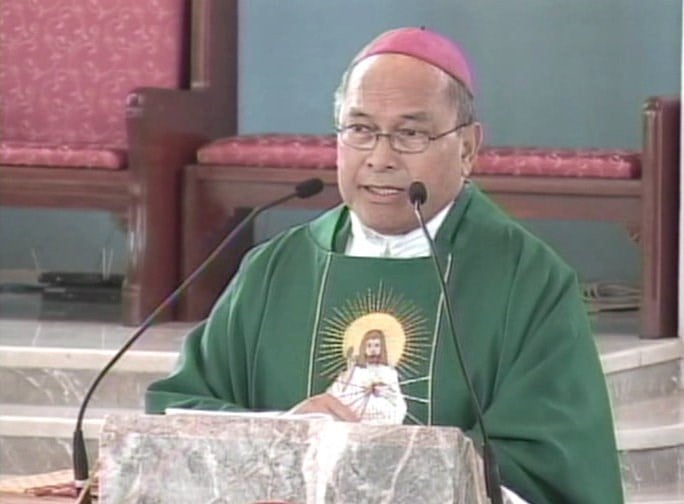According to KUAM news, the former Archdiocesan Finance Council said that:
The property was not intended to be limited to exclusive groups, but to benefit all local Catholics.The Yona property was purchased in 2002. However, it was in 1999 when Father Pius, Pat Cottman, and Javier Santaballa presented to Archbishop Apuron a petition to open a Redemptoris Mater Seminary on Guam. The Archbishop agreed and a letter was drafted on February 2, 1999. The letter was blessed by Archbishop Apuron and is on record. The petition was approved in September 8, 1999 by the International Team of the Way (Kiko Arguello, Carmen Hernandez, and Father Mario). A decree was then signed by Archbishop Apuron in that same year. This information can be found in the records of the Guam Legislature (the bold is mine):
WHEREAS, Fr. Pius Sammut, OCD, Pat Cottman and Javier Santaballa, met with Archbishop Anthony S. Apuron, OFM, Cap., D.D., Archbishop of Hagatna, Fr. David C. Quitugua, Vicar general of the Archdiocese, and Fr. Adrian Cristobal, Chancellor of the Archdiocese, Fr. Pius Sammut, OCD, Pat Cottman and Javier Santaballa, the Catechists, and presented to the Archbishop the possibility of requesting a Redemptoris Mater Seminary to the initiators of the Neo-Catechumenal Way for Guam for the New Evangelization of the vast region of the Pacific; and
WHEREAS, Archbishop Anthony Sablan Apuron O.F.M., Cap., D.D., Archbishop of Hagatna and President of CEP AC, decided to accept the recommendation to create the first ever major seminary in the three hundred plus year Catholic history in the area, to form presbyters for the new evangelization believing in the vision of the Pope and witnessing the serious challenges Micronesia is facing today because of secularization and the growing shortage of priests; and
WHEREAS, Guam's catechist team led by Fr. David C. Quitugua and Fr. Adrian Cristobal, drafted a letter, blessed by the Archbishop, to the initiators of the Neo-Catechumenal Way requesting for a Redemptoris Mater Seminary for Guam on February 2, 1999. Archbishop Apuron made a presentation to the Archdiocesan Priest Council regarding the petitioning in early September, 1999. Archbishop Apuron made a formal request for the Seminary in Porto S. Giorgio, Italy, at a convivence of the initiators of the Neo-Catechumenal Way with aspirant seminarians from all over the world at which time there was also petition from Dallas, Texas, thus reducing the chances to open one in Guam; and
WHEREAS, Kiko Arguello, Carmen Hernandez and Fr. Mario Pezzi, initiators and international responsible team of the Way, granted the petition of Archbishop Apuron on September 8, 1999, to the amazement of many, of opening a Redemptons Mater Seminary in Guam............Therefore, a petition was made and granted for the opening of a Redemptoris Mater Seminary on Guam in 1999. That petition was approved in the same year. That was THE reason for the purchase of the Accion Hotel in 2002. It was the NCW who went looking for a location for a Redemptoris Mater Seminary to be opened on Guam. And it was the NCW who found that property. The traditional Latin Mass Catholics never went out looking for any property nor did they ever petition for a seminary.
As for the letter from the donor that Mr. Untalan quoted, that quote came from the jungle. Tim Rohr never printed any letter from the donor. He only quoted from what he said was a letter from the donor. Tim also said that Archbishop Apuron wrote a letter to the donor asking for his/her support for his/her donation in purchasing the property for a seminary. Tim also never published the letter of the Archbishop with the Archdiocese letterhead. He only quoted what he said came from the Archbishop's letter.
That is as far as I know. Father Pius and whoever was there involved from 1999-2003 would have more information regarding the rest of Mr. Untalan's statements.




https://en.wikipedia.org/wiki/Presbyter
Now, let us take a look at what Wikipedia has to say about the English word "priest" (bold is mine):